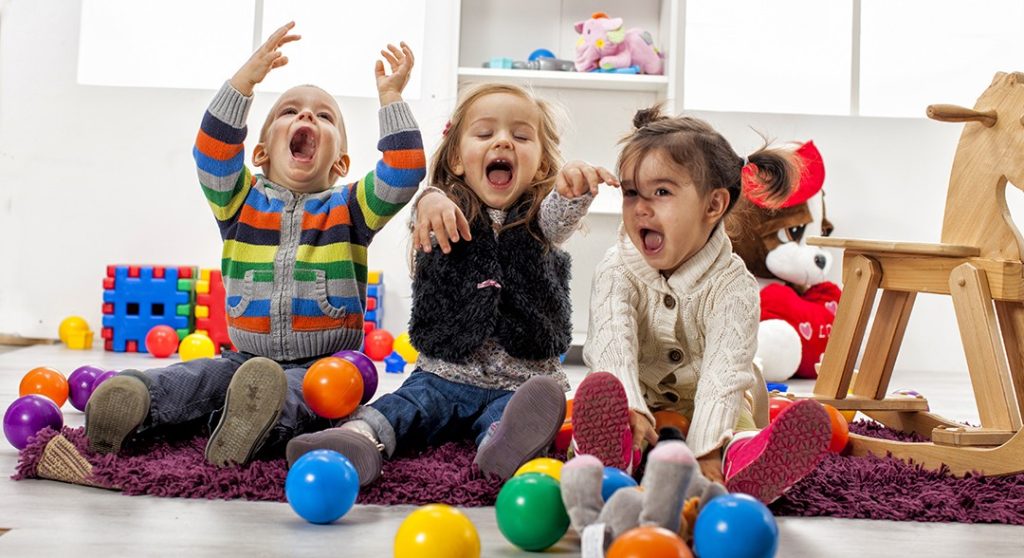Pretend and imaginative play
April 27, 2022

When a child plays, they have control over what happens, what is used and how the activity will transpire. Pretend and imaginative play is done knowingly and intentionally. Playing is deliberate and pretending and imagining is a mental state that allows children to explore, expand and question.
The benefits of pretend and imaginative play
Problem–solving
Pretend and imaginative play encourages the development of problem-solving. Children who play imaginatively in their early years are more likely to think creatively and are better problem-solvers as they grow older. Engagement in pretend and imaginative play allows a child to practise decision-making skills without judgement or assessment.
Social and language ability
Social and language ability increases with pretend and imaginative play. Imagination appears to take shape in the young brain at about the same time that children learn to talk. As children tell stories and act out make-believe situations, they use their language skills to describe their actions. If a child does not have a word for what they wish to express, they can ask an adult or more knowledgeable peer to find the word, adding to the range of words they know.
Emotional development
Emotional development is also supported through pretend and imaginative play. This type of play helps increase concentration and attention, and gives children the chance to socialise, express emotions and practise motor skills. Children who use more fantasy are likely to express more emotions as they play with blocks and puppets. Pretend and imaginative play offers children the ability to sort their way out of stressful situations, such as dealing with confrontation from other children.
Creativity
There is always a creative element to pretend and imaginative play, which allows children to innovate, to imagine being someone or something else or to fantasise about engaging in household activities like baking cakes. Through pretend play, children develop skills in thinking symbolically and creating an image of something that is not directly in view. Imaginations develop early in life, connecting brain cell to brain cell and laying the groundwork for a lifetime of fantasy and creativity.
Vocabulary development
It is thought that children who play more imaginatively are in a position to develop better vocabularies than children who engage in less imaginative play. When children play make-believe, they’re exercising their imaginations.
What can you offer your child to encourage pretend and imaginative play?
- Make discarded books, magazines and catalogues available so your child can cut out pictures of interest and create a book of their own or a picture or collage.
- Provide your child with access to finger paint or water with paper or other material on which to paint.
- Have torches available so your child may use them in a dark room to explore the contrast of light and dark.
- Take your child for a walk, listen to the sounds in the environment and try to imitate them.
- Encourage your child to listen to different types of music and freely move to the music, sounds, rhythms and words; use scarves or other fabric to keep time to the music.
- Have a container with items like spices, perfumes, aromatherapy oils, or scented, unlit candles that your child may smell, pull apart and experiment with.
- Collect a variety of textures that may be easily held and manipulated – such as a sponge, soft cloth, feather, satin, and silk – allowing the child a range of materials with which to pretend and explore for their tactile interest.
- Children enjoy playing with ‘water paint’. Give the child a bucket of water and paintbrush and let them paint themselves, you, the house, or whatever they like on the floor outside.
- A sandbox offers your child opportunities to build, bury, or pretend with trucks, buckets, dolls, and/or small objects.
Play should be enjoyable and present your child with the opportunity for a sense of thrill, novelty and excitement. Children thrive on chances to explore on their own, with space and time to get stuck in. You, as the adult, may facilitate your child’s pretend and imaginary play by setting up an environment for the child to enjoy playful experiences and expression.
Children need to play, and imaginary and pretend play are significant to their health, wellness and development by allowing them to take risks, learn about themselves and challenge their abilities through interaction with a wide variety of play materials.